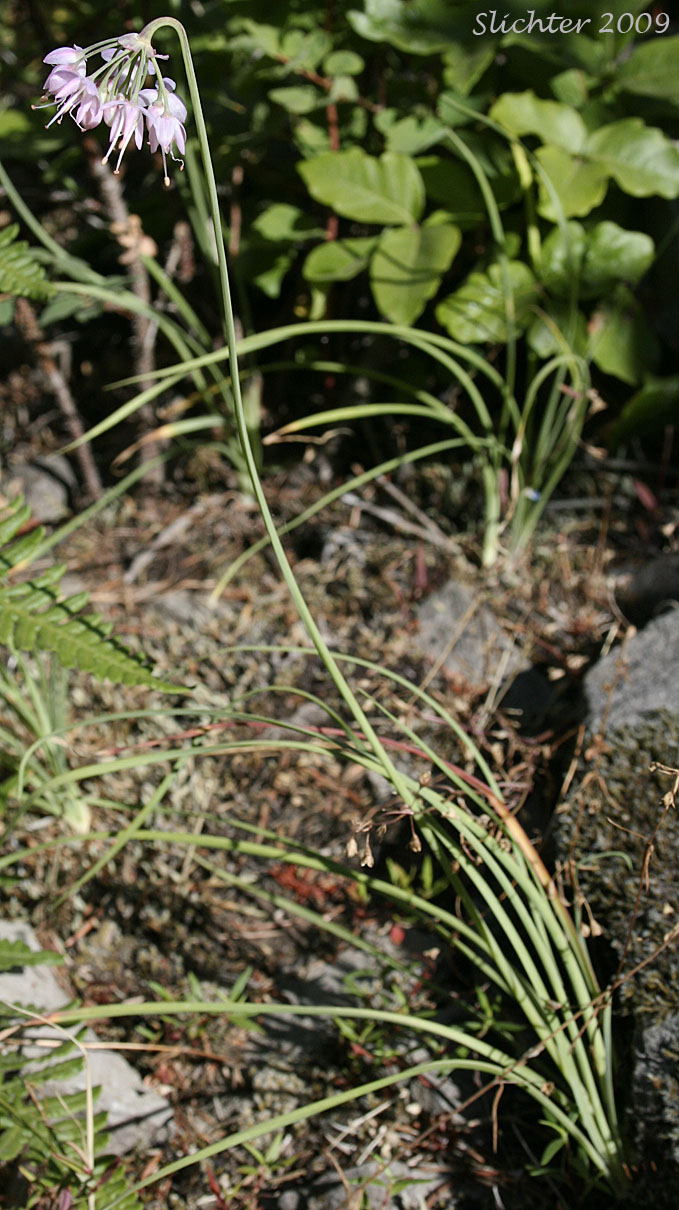Nodding onion is a pretty wildflower, which is of interest for the rock garden. Its single stem arises from an elongate bulb which might be short-rhizomatous at the base. . It has several leaves which arise from the bulb. The leaves are thicker and channeled in cross section near the base or nearly flat, up to 6 mm wide and shorter than the height of the scape. Unlike many onions, the leaves persist through flowering. The scape ranges from 10-50 cm high and is variable in cross section, ranging from round, sometimes with longitudinal ribs along it surface, to flattened and narrowly winged.
The inflorescence is a small umbel of a few to many flowers. The flowers turn downward, or nod, hence the name of the plant. The 2 bracts are ovate in shape with acute tips. The slender pedicels are 1.5-2.5 cm long. The flower parts number six, and the tepals are pink or white in color. Individual tepals are elliptic-ovate in shape with obtuse tips and measure from 4-6 mm long. The stamens extend beyond the tepals.
Nodding onion is found in moist, meadow soils of mountainous areas.
Nodding onion has a widespread range. In the Pacific Northwest, it may be found from British Columbia, south through eastern Washington to the Columbia River, where it is found westward to the coast. It may also be found south through the west side of the Cascades to Lane County, OR and it is also found along the Oregon coast to Lincoln County.
In the Columbia River Gorge it may be found between the elevations of 100'-4000' from Crown Point east to Hamilton Mountain.
